Difference between revisions of "Leather furniture"
| (42 intermediate revisions by one user not shown) | |||
| Line 5: | Line 5: | ||
<p align=center> | <p align=center> | ||
| − | [[bild: | + | [[bild:Luxury-leather-furniture.jpg|500px]] |
| − | + | ||
| − | + | ||
</p> | </p> | ||
| − | == | + | ==What is upholstery leather and what are leather furniture?== |
| − | + | The history of leather furniture dates back to the origins of mankind. As early as ancient times, seating surfaces were covered with leather to ensure comfort and durability. Over the centuries, various styles and techniques of leather processing have evolved, from handcrafted details in the Baroque era to sleek, modern designs in the 20th century. Leather furniture has found its place in living rooms, offices, and public spaces and is known today for its timeless elegance and luxurious character. | |
| − | [[ | + | According to statistics from 2018, about 35% (sales) of all upholstered furniture sold worldwide is covered in leather. A large furniture set will require between 6 and 7 cow [[Hide - Skin|hide skins]]. However, furniture is also sold where only the contact surfaces are leather and the outer surfaces are covered with fabric or [[imitation leather]]. |
| − | There is no standard furniture leather, | + | [[Cow leather|Cow hide]] is the number one choice for leather furniture. There are some exceptions and, in rare cases, [[Sheep leather|sheep leather]] may be obtained from niche providers. Otherwise you will not find sheep leather upholstery in a standard furniture store. |
| + | |||
| + | There is no standard furniture leather, as many [[Types of leather|types of leather]] are processed for furniture. They differ in the [[Tanning leather|tanning process]], manufacturing, [[Leather dye - Leather color - Leather colour|dyeing method]] and price ranges. From high quality [[aniline leather]] to [[Coated leather - Laminated leather|coated]] [[Split leather|split leather]] or [[Artificial leather - Imitation leather|synthetic leathers]], all materials are processed. | ||
| Line 26: | Line 26: | ||
| − | It is | + | It is wrong to assume that "leather furniture" always means good [[Leather quality|quality]]. As with other natural materials (wood, stone, etc.), there are many different qualities. Usually the price is a good indicator of how good a quality it is. A reputable furniture shop will ensure that you are getting what you are paying for. If it sounds too good to be true - it usually is. |
| − | + | ||
| − | + | ||
| + | If you are planning to purchase leather furniture, the following information will give you an overview of the different [[Leather quality|leather qualities]] and [[Types of leather|types of leather]], as well as their advantages and disadvantages. | ||
== The different types of furniture leather in comparison == | == The different types of furniture leather in comparison == | ||
| Line 35: | Line 34: | ||
* [[Smooth leather]] with a [[Finish|coloured finish]] | * [[Smooth leather]] with a [[Finish|coloured finish]] | ||
| − | Significantly less are the following types of leather: | + | Significantly less common are the following types of leather: |
| − | * Only dyed [[ | + | * Only dyed [[aniline leather]] |
* Velvet like [[Suede|suede]] and [[Nubuck|nubuck]] | * Velvet like [[Suede|suede]] and [[Nubuck|nubuck]] | ||
* [[Water buffalo leather]] | * [[Water buffalo leather]] | ||
| − | * [[Antique | + | * [[Antique Leather - Vintage Leather|Antique leather]] |
| − | * [[Pull up leather]] (do not | + | * [[Pull up leather - Greased leather - Waxed leather - Oiled leather|Pull up leather]] (do not confuse with [[PU leather]]!) |
* [[PU leather]] ([[Coated leather|coated]] [[Split leather|split leather]]) | * [[PU leather]] ([[Coated leather|coated]] [[Split leather|split leather]]) | ||
| + | |||
| + | |||
| + | <p align=center> | ||
| + | [[bild:Ledersessel-01.jpg|134px]] | ||
| + | [[bild:Möbel-Leder-angeschliffen-02.jpg|232px]] | ||
| + | [[bild:Designersessel-Leder.jpg|134px]] | ||
| + | </p> | ||
=== [[Smooth leather]] with a protective coating on the surface ([[Pigmented leather|finished]] leather, [[Semi-aniline|semi-aniline]]) === | === [[Smooth leather]] with a protective coating on the surface ([[Pigmented leather|finished]] leather, [[Semi-aniline|semi-aniline]]) === | ||
| − | The most common leather for furniture is [[ | + | The most common leather for furniture is [[Gloss of leather|semi-gloss]], [[Pigmented leather|surface-coloured]] [[Smooth leather|smooth leather]]. It’s always [[Cow leather|cow hide]], which has been given a [[Finish|protective finish]]. The leather is easy to [[Leather cleaner|clean]] and [[Leather care|care for]] and signs of [[Leather damages|wear]] can easily be re-adjusted, provided they are not too heavy. |
| − | The colour layer can vary in thickness. If | + | The colour layer can vary in thickness. If it's very thin, the leather is called [[Semi-aniline|semi-aniline leather]] (also lightly pigmented [[napa leather]]). While this is slightly more sensitive than leather with thick colour layers, it [[Haptic evaluation of leather surfaces|feels]] warmer and softer. [[Car leather|Car leathers]] have thick colour layers. When comparing the [[Haptic evaluation of leather surfaces|grip]] of both types of leather, furniture leather is usually more attractive. Also, given that furniture leather is in more direct contact with the skin, the warmer and softer feel is a more important consideration. |
| − | In the higher price ranges, the [[Leather grain | + | In the higher price ranges, the [[Leather grain - Grain side|grain texture]] of the leather is mostly natural. In the lower price ranges, the leather is almost always [[Embossed leather#Corrected Grain - sanded and embossed leather|sanded and embossed]]. This leads to less [[Leather cutting waste|waste]] because poorer skins can be processed as [[Natural markings on leather|damages]] from insects, diseases or injuries are better hidden by the [[Embossed leather|embossing]]. However, an embossing does not always mean bad leather. There are also high [[Leather quality|quality]] [[Embossed leather|embossed]] furniture and car leathers, where the embossing has been done for design reasons. Be careful with special offers. Remember that poor leather is often [[Embossed leather#Corrected Grain - sanded and embossed leather|sanded and embossed]]. Even [[Split leather|split leather]] can be embossed or [[PU leather|coated with PU films]] to make it look like [[Smooth leather|smooth leather]]. But it's not and the composition of such leather is usually not properly [[Genuine leather|declared]]. In Germany, for example, [[PU leather|coated]] [[Split leather|split leather]] must not be used for seats, back rests and arm rests. |
<p align=center> | <p align=center> | ||
| − | + | [[bild:gedeckt.jpg|500px]] | |
| − | [[bild:gedeckt.jpg| | + | |
| − | + | ||
</p> | </p> | ||
<p align=center> | <p align=center> | ||
| − | ''Surface coloured leather furniture. Because of the [[Finish|protective coating]] the leather is easy to clean and | + | [[bild:Designermöbel_01.jpg|250px]] |
| + | [[bild:Moebel-pigmentiert-006.jpg|250px]] | ||
| + | </p> | ||
| + | <p align=center> | ||
| + | ''Surface-coloured leather furniture. Because of the [[Finish|protective coating]] the leather is easy to clean and maintain.''<br></p> | ||
<p> </p> | <p> </p> | ||
| − | Darker leather is easier to handle than lighter leather | + | Darker leather is easier to handle than lighter leather where dirt is more visible. [[Leather damages#Textile discolouration on leather|Discolouration of textiles or leather]] and [[Leather damages#Signs of wear on leather|signs of wear]] are more noticeable on light leather than on darker leather. [[Cat scratches on leather|Pet owners]] are advised to choose darker leather colours. But bright [[Finish|pigmented]] leather is not so problematic that it should always be rejected. |
| − | Sometimes [[Pigmented leather|pigmented leather]] for furniture is offered as | + | Sometimes [[Pigmented leather|pigmented leather]] for furniture is offered as Longlife Leather. This type of leather is often connected with a 5-year warranty. The warranty applies only to "[[Leather care|easy maintenance]]" and "[[Colour fastness - Light fastness of leather|fading]]". It also requires the purchaser to prove that care products have been purchased from the manufacture and used regularly. Such warranties are worthless. "Easy maintenance" is not a defined property. Modern pigmented leather is always easy to maintain and does not fade. [[Leather damages|Signs of wear]] and permanent stains are excluded from the warranty. A practical case where a warranty is more valuable than its legal counterpart hardly ever occurs. Often buyers are disappointed when warranty claims are not accepted. You should only buy such furniture if you would have made the purchase without the extra warranty. |
| − | [[Leather damages#Grease and sweat stains on leather|Grease stains]] and other stains are | + | [[Leather damages#Grease and sweat stains on leather|Grease stains]] and other stains are not a serious problem with [[Pigmented leather|pigmented leathers]], as the colour layer on the surface prevents the [[Open pore leather|absorption]] of liquids. Also [[Colour fastness - Light fastness of leather|fading]] is not an issue with pigmented leathers as modern leather pigments are very fade-resistant. |
| − | Important: [[Semi-aniline|Semi-aniline leather]] only has a thin [[Finish|layer of pigments]]. As a result, such leather | + | Important: [[Semi-aniline|Semi-aniline leather]] only has a thin [[Finish|layer of pigments]]. As a result, such leather is more prone to grease stains in contact areas and has a higher tendency to fading. But semi-aniline leather is not as sensitive as [[Open pore leather|porous]] [[aniline leather]], but has a [[Haptic evaluation of leather surfaces|nicer touch]], compared to stronger [[Pigmented leather|pigmented leather]], which is often [[Embossed leather#Corrected Grain - sanded and embossed leather|embossed and sanded]]. |
| − | '''Conclusion:''' Pigmented leather is not as soft and warm as [[ | + | '''Conclusion:''' Pigmented leather is not as soft and warm as [[aniline leather]], but it`s more robust and easier to [[Leather care|clean and care for]]. Generally, the more expensive the leather, the higher the quality. Cheap leather has a lower life expectancy. For special offers, you should always confirm in the purchase order or in the receipt that you have not bought [[Split leather#coated split leather|embossed split leather]] or a [[PU leather|film-coated split leather]]. Such leather is very vulnerable and has a shorter life expectancy. The best choice of these types of leather is [[Semi-aniline|semi-aniline]]. It costs more, but it is [[Haptic evaluation of leather surfaces|warmer and softer]]. But always check carefully! Often furniture leather is offered as [[Semi-aniline|semi-aniline]] but is far from it. |
| − | '''[[Basic rules when dealing with leather|Maintenance advice]]:''' [[Pigmented leather]] is easy to [[Leather cleaner|clean]] and [[Leather care|care]]. There are manufacturers that give a care recommendation. There are also many manufacturers | + | '''[[Basic rules when dealing with leather|Maintenance advice]]:''' [[Pigmented leather]] is easy to [[Leather cleaner|clean]] and [[Leather care|take care of]]. There are manufacturers that give a care recommendation. There are also many manufacturers that only recommend an occasional wiping with a damp cloth. This may be enough for the duration of the implied warranties. But leather that is not cared for (every 3-6 months at least in the contact zone and in direct sunlight), is likely to develop [[Leather damages|signs of wear and ageing]] faster. It is also important from a hygiene perspective to clean highly used areas regularly. |
| − | '''Advice for stains and damages:''' Always | + | '''Advice for stains and damages:''' Always seek advice promptly. As soon as stains, dryness, brittleness, fading or other problems emerge, ask a [[Leather repair|specialist company]]. The longer you wait, the harder it is to repair the damage. |
| − | === [[Aniline | + | === [[Aniline leather]] ([[Open pore leather|open pore]] [[Smooth leather|smooth leather]]) === |
<br> | <br> | ||
<p align=center> | <p align=center> | ||
| Line 83: | Line 91: | ||
<p> </p> | <p> </p> | ||
| − | [[Aniline | + | [[Aniline leather]] is [[Open pore leather|porous]] [[Smooth leather|smooth leather]]. Its softness and warmth - it never feels cold - together with its beauty are what make aniline the king of leathers. |
| − | + | However, aniline leather is more sensitive than other types. A drop of water rubbed on the surface easily penetrates the leather. Even if it has been waterproofed by the manufacturer, this protective layer rubs off in areas of use and the leather becomes stain-sensitive in the long run. | |
<p align=center> | <p align=center> | ||
| − | [[bild:Offenporig-001.jpg| | + | [[bild:Offenporig-001.jpg|500px]] |
| − | [[bild:Halbeingezogen.jpg| | + | </p> |
| + | <p align=center> | ||
| + | [[bild:Halbeingezogen.jpg|500px]] | ||
</p> | </p> | ||
<p align=center> | <p align=center> | ||
| − | ''[[Aniline | + | ''[[Aniline leather]] is [[Open pore leather|open pore]], warm and soft, but sensitive.''<br></p> |
<p> </p> | <p> </p> | ||
| − | Stains cannot be wiped off. Liquids sink into the surface and stains remain. In most cases there are no [[Leather cleaner|cleaners]] which can remove such stains. Aniline leather also tends to | + | Stains cannot be wiped off. Liquids sink into the surface and stains remain. In most cases, there are no [[Leather cleaner|cleaners]] which can remove such stains. Aniline leather also tends to get [[Leather damages#Grease and sweat stains on leather|grease stains]] in head or skin contact areas and is mostly [[Colour fastness - Light fastness of leather|UV-sensitive]]. |
| − | + | Where there are children and pets, food consumption, direct sunlight and direct contact with hair without cushions, it is advisable to avoid aniline leather altogether, or use it with extreme care. | |
| − | If you decide on aniline leather, you probably should choose a darker leather. | + | If you decide on aniline leather, you probably should choose a darker leather. It doesn't need to be black but perhaps dark brown, dark green, dark blue or dark red would be good choices. But the higher UV sensitivity remains. |
| − | Aniline leather is more expensive because the best skins without [[ | + | Aniline leather is more expensive because the best skins without [[Natural markings on leather|damages]] can only be used for this type of leather. Often customers think that the higher price is associated with a greater insensitivity. But this is wrong. Silk is also much more expensive than other fabrics but is, nevertheless, very sensitive. It's the same with aniline leather. Therefore, a good furniture store should ask whether aniline is suitable for the customer's requirements. But this seldom occurs, as more expensive furniture is better for business. |
<p align=center> | <p align=center> | ||
| − | [[bild:Moebel-Schaf-001.jpg| | + | [[bild:Moebel-Schaf-001.jpg|500px]] |
| − | [[bild:Sessel-Patina-01.jpg| | + | </p> |
| − | [[bild:Möbel-Anilinleder-01.jpg| | + | <p align=center> |
| + | [[bild:Sessel-Patina-01.jpg|250px]] | ||
| + | [[bild:Möbel-Anilinleder-01.jpg|250px]] | ||
</p> | </p> | ||
<p align=center> | <p align=center> | ||
| Line 114: | Line 126: | ||
<p> </p> | <p> </p> | ||
| − | '''Conclusion:''' Aniline leather is beautiful and | + | '''Conclusion:''' Aniline leather is beautiful and feels nice and warm, but it is sun and stain-sensitive. Therefore, it is important to handle it carefully. Avoid sunlight and stains. If in doubt, choose darker colours. Aniline leather is in the upper price segment. Buy well-known brands and from established dealers. |
| − | '''[[Basic rules when dealing with leather|Maintenance advice]]:''' Protect aniline right from the start with a good [[Waterproofing|waterproofing spray]] to prevent stains. If the leather | + | '''[[Basic rules when dealing with leather|Maintenance advice]]:''' Protect aniline right from the start with a good [[Waterproofing leather|waterproofing spray]] to prevent stains. If the leather becomes dry over the years, use a spray containing oils. The most important protection is prevention! Therefore, always protect aniline leather well against stains and direct sunlight. |
| − | '''Advice for stains and damages:''' Always | + | '''Advice for stains and damages:''' Always seek advice promptly and avoid making the damage worse with improper care and cleaning. As soon as stains, brittleness, fading or other problems occur, ask a [[Leather repair|specialist company]] for advice. The longer you wait, the harder it is to clean or repair. |
| − | === [[Suede]], [[Nubuck|nubuck]] and [[Water buffalo leather|water buffalo leather]] (between velvet like leather and [[Aniline | + | === [[Suede]], [[Nubuck|nubuck]] and [[Water buffalo leather|water buffalo leather]] (between velvet-like leather and [[Aniline leather]]) === |
| − | These | + | These porous and mostly sanded leathers are sensitive. Stains and fading are typical problems. As with aniline leather, the possibilities for cleaning and repairing these leather types are limited. |
<p align=center> | <p align=center> | ||
| − | [[bild:Sofa-Nubuk-01.jpg| | + | [[bild:Sofa-Nubuk-01.jpg|500px]] |
| − | [[bild:Velours-Sofa-02.jpg| | + | </p> |
| + | <p align=center> | ||
| + | [[bild:Velours-Sofa-02.jpg|500px]] | ||
</p> | </p> | ||
<p align=center> | <p align=center> | ||
| Line 133: | Line 147: | ||
<p> </p> | <p> </p> | ||
| − | '''Conclusion:''' [[Nubuck]] and [[Suede|suede]] are beautiful types of leather. They are soft and warm, but | + | '''Conclusion:''' [[Nubuck]] and [[Suede|suede]] are beautiful types of leather. They are soft and warm, but susceptible to stains and [[Colour fastness - Light fastness of leather|fading]]. Therefore handle them carefully. Avoid direct sunlight and prevent stains. Choose darker colours if possible. If stains, fading or other problems occur, seek advice from a specialist company as soon as possible. The longer you wait, the harder it is to repair or restore it easily. |
=== [[Pull up leather - Greased leather - Waxed leather - Oiled leather|Pull up leather - Greased leather - Waxed leather - Oiled leather]] - [[Vintage leather]] === | === [[Pull up leather - Greased leather - Waxed leather - Oiled leather|Pull up leather - Greased leather - Waxed leather - Oiled leather]] - [[Vintage leather]] === | ||
| − | Nowadays [[Vintage leather|vintage leather]] | + | Nowadays [[Vintage leather|vintage leather]] falls within the typical range of leather types used by furniture manufacturers. These [[Types of leather|types of leather]] develop [[Antique Leather - Vintage Leather#Leather patina|patina]] faster than other types of leather. The surface is finished with [[Pull up leather - Greased leather - Waxed leather - Oiled leather|oils and fats]] to make it smooth and wear marks become visible by stretching, scratching and friction. These are all the hallmarks of vintage leather. |
| + | |||
| + | <p align=center> | ||
| + | [[bild:Fettleder-08.jpg|500px]] | ||
| + | </p> | ||
<p align=center> | <p align=center> | ||
| − | + | [[bild:Vintage-Leather-01.jpg|500px]] | |
| − | [[bild:Vintage-Leather-01.jpg| | + | |
</p> | </p> | ||
| − | '''Conclusion:''' [[Vintage | + | '''Conclusion:''' [[Vintage leather]] is durable and easy to maintain. Customers who know and expect such changes with time, will be satisfied with this type of leather. But anyone looking for furniture that stays looking as good as new for as long as possible will be disappointed by the ageing effects. |
| − | '''[[Basic rules when dealing with leather|Maintenance advice]]:''' Seek advice with these types of leather. [[Pull up leather - Greased leather - Waxed leather - Oiled leather|Greased, waxed or oiled leather]] is usually easy to clean and maintain. But depending on the [[ | + | '''[[Basic rules when dealing with leather|Maintenance advice]]:''' Seek advice with these types of leather. [[Pull up leather - Greased leather - Waxed leather - Oiled leather|Greased, waxed or oiled leather]] is usually easy to clean and maintain. But depending on the [[Gloss of leather|gloss]] and [[Open pore leather| porosity ]] of the leather, the care instructions can vary. Signs of wear can often be polished off with an appropriate care product. |
=== [[PU leather|PU leather - Foil-coated split leather]] === | === [[PU leather|PU leather - Foil-coated split leather]] === | ||
| − | Sometimes furniture is | + | Sometimes furniture is upholstered with [[Split leather|split leather]], which is coated with a finish and embossed, or a [[PU leather|layer of embossed and coloured polyurethane]] is glued to the surface to make it look like the more valuable [[Top grain leather|grain side split]]. Due to frequent problems occurring after just a short period, this kind of leather is not recommended. Because of the coating, this leather is not breathable and you sweat more quickly just by sitting on it. It also feels colder compared to higher quality smooth leather. |
<p align=center> | <p align=center> | ||
| − | [[bild:PU-Leder-Sofa-01.jpg| | + | [[bild:PU-Leder-Sofa-01.jpg|500px]] |
| − | [[bild:PU-Leder-Sofa-02.jpg| | + | </p> |
| − | [[bild:PU-Leder-Sofa-03.jpg| | + | <p align=center> |
| + | [[bild:PU-Leder-Sofa-02.jpg|250px]] | ||
| + | [[bild:PU-Leder-Sofa-03.jpg|250px]] | ||
</p> | </p> | ||
| − | '''Conclusion:''' In a guest area | + | '''Conclusion:''' In a guest area that is not heavily used, PU leather is not a problem. But for living room furniture in daily use, this type of leather is soon damaged or becomes worn. As PU leather is very inexpensive, it is suitable where [[Leather quality|longevity and comfort]] are not the primary focus. |
| − | ===[[Types of | + | ===[[Types of leather]] - [[Leather quality]] - [[Leather care|Ease of maintenance]]=== |
| − | Most assume that the best quality leather would be the least sensitive and easiest to [[Leather care|maintain]]. But as with textiles or precious metals (silk is very sensitive and gold not scratch resistant) | + | Most people assume that the best quality leather would be the least sensitive and easiest to [[Leather care|maintain]]. But as with textiles or precious metals (silk is very sensitive and gold not scratch-resistant), the sensitivity at the highest price and quality segment is also higher. Valuable objects often require more and better maintenance than cheaper items. |
| Line 172: | Line 191: | ||
</p> | </p> | ||
<p align=center> | <p align=center> | ||
| − | ''Comparison of [[Leather quality|leather quality]] and sensitivity / [[Leather care|ease of maintenance]].''<br></p> | + | ''Comparison of [[Leather quality|leather quality]] and sensitivity / [[Leather care|ease of maintenance]].'' |
| + | </p> | ||
| + | <p align=center> | ||
| + | ''[[Aniline leather|Aniline]] - [[nubuck]] - [[suede]] - [[semi-aniline]] - [[Full grain leather|pigmented full grain]] - [[corrected grain]] - [[Coated leather - Laminated leather|coated split leather]]''<br></p> | ||
<p> </p> | <p> </p> | ||
Remarks: | Remarks: | ||
| − | * ''Why is [[ | + | * ''Why is [[aniline leather]], [[Nubuck|nubuck]] and [[Suede|suede]] less [[Leather care|easy to maintain]]?'' They are [[Open pore leather|open-pore leather]] and therefore more [[Leather cleaner|susceptible to stains]]. |
| − | * ''Why is [[ | + | * ''Why is [[aniline leather]] associated with t the best [[Leather quality|quality]]?'' Because aniline leather is especially [[Haptic evaluation of leather surfaces|natural and warm]]. |
| − | * ''Why is [[Split leather#Coated split leather - Laminated split leather|coated split leather]] | + | * ''Why is [[Split leather#Coated split leather - Laminated split leather|coated split leather]] harder to maintain?'' It is more unstable and classic [[Leather care|leather care products]] harms some types of split leather coatings. |
| − | '''Conclusion:''' [[ | + | '''Conclusion:''' [[Semi-aniline|Semi aniline leather]] and [[Finish|pigmented smooth leather]] are the golden mean for leathers in constant use. They are comfortable, natural and easier to maintain as the remaining types of leather, but also cost a bit more. In the price-sensitive area [[Embossed leather#Corrected Grain - sanded and embossed leather|corrected leather]] is also a good choice. |
== [[Leather videos|Video]] about [[types of leather]]== | == [[Leather videos|Video]] about [[types of leather]]== | ||
<p align=center> | <p align=center> | ||
| − | <flashow> | + | <flashow>//www.youtube.com/v/DFtRH_aLGL0&fs=1&color1=0x660000&color2=0x550000&border=1|width=500|height=281,25</flashow></p> |
<p align=center> | <p align=center> | ||
''[[Smooth leather|Types of smooth leather]]'' | ''[[Smooth leather|Types of smooth leather]]'' | ||
</p> | </p> | ||
| − | |||
| − | |||
| − | |||
== What should be considered when buying new leather furniture? == | == What should be considered when buying new leather furniture? == | ||
| − | + | You can have bad luck when purchasing leather furniture. But there are basic rules that help to make the right choice and avoid the worst mistakes. | |
| − | You can have bad luck when purchasing leather furniture. But there are basic rules that help to avoid the worst mistakes. | + | |
=== Advice === | === Advice === | ||
| − | Often the advice | + | Often the advice at the time of purchase is poor. This is because very few leather furniture sellers can identify the different [[Types of leather|leather types]] and therefore are unable to fully explain their advantages and disadvantages. Complicit in this are the manufacturers who imply that all leathers are easy to maintain by recommending "wipe with a damp cloth" as the best [[Leather care|leather care]]. While this is fine within the initial warranty period, it is not the best strategy in the long term. Customers are then understandably disappointed when the leather does not withstand use as well as expected. |
| − | A customer with [[Pigmented leather|pigmented leather]] contacts a [[Leather repair|leather repair company]] on average | + | A customer with [[Pigmented leather|pigmented leather]] upholstery contacts a [[Leather repair|leather repair company]] for the first time after, on average, 5 to 10 years. The customer is just a little disappointed and the problem is usually easy to remedy (products for less than £80 or US$100). |
| − | A customer with [[ | + | A customer with [[aniline leather]] seeks advice, on average, after 3 to 6 years and is rather disappointed because the leather was expensive, and a service or products to restore also come at a high price. In about 30% of all cases (large-scale fading, retracted stains) a professional leather cleaning and [[Leather repair|colouration]] with corresponding costs is necessary. With darker leather however, it is usually much easier. |
| − | A customer with [[Suede|suede]] or [[Nubuck|nubuck]] | + | A customer with [[Suede|suede]] or [[Nubuck|nubuck]] is likely to contact a [[Leather repair|leather repair company]] in around less than 5 years and is rather unhappy. Simple aid is only possible on slight stains. Customers with [[Water buffalo leather|water buffalo leather]] seek advice after about 5 to 10 years and are not unhappy with their leather choice. This type of leather is almost only sold in dark colours. |
| − | A [[PU leather]] customer needs help | + | A [[PU leather]] customer needs help after only about 2 to 4 years and often has problems, which can't be solved without high costs. |
| − | + | These statistics are only a rough guide. The individual case depends on the intensity of wear and tear that the leather has to withstand. Is the leather constantly in use? Is it permanently in the sun? Does it get dirty? Are there children and pets? Is the leather light or dark? How quickly were initial signs of damage addressed? All these individual factors must be taken into consideration when selecting the appropriate type of leather. | |
| − | The statutory warranty period is 2 years in | + | The statutory warranty period is 2 years in most European countries. Beyond this, only a few manufacturers will assist if there are problems. Therefore, you have to think carefully about your choice before buying. In Norway, the statutory warranty period is 5 years. Also the sales staff there offer much better advice to avoid claim costs later. |
| Line 221: | Line 239: | ||
=== [[Leather quality|Test methods for leather - Leather standards]] === | === [[Leather quality|Test methods for leather - Leather standards]] === | ||
| − | Each country has its own rules for upholstery leather. There are national and international standards. With upholstery leathers, standards are often less stringent than | + | Each country has its own rules for upholstery leather. There are national and international standards. With upholstery leathers, standards are often less stringent than those required by the [[Car leather|car industry]]. The standards for upholstery leather are usually determined by the [[Tannery|leather manufacturers]] and furniture manufacturers and are not very strict. Having said that, it is also known that a quick examination reveals a [[Leather quality|leather quality]] that is within the guidelines, but then, after a few years, the customer ends up with unsightly furniture. |
| − | However, the manufacturer cannot please everyone. The [[Open pore leather|beautiful]] leathers are more sensitive and the easy | + | However, the manufacturer cannot please everyone. The [[Open pore leather|beautiful]] leathers are more sensitive and the easy [[Leather care|care]] leathers are less attractive and [[Haptic evaluation of leather surfaces|feel colder and stiffer]]. It's impossible to have both at the same time. |
| − | There are also numerous [[Leather repair|repair products and leather repair specialists]]. But advice has to be | + | There are also numerous [[Leather repair|repair products and leather repair specialists]]. But advice has to be sought in good time. Frequently furniture owners ask for advice too late, which makes solving the problem much harder, as well as more expensive. |
| − | There are committed furniture stores (mostly family businesses) which give very good advice and provide an excellent customer service. In large furniture chains, the staff | + | There are committed furniture stores (mostly family businesses) which give very good advice and provide an excellent customer service. In large furniture chains, the staff tend to be less committed and the contacts are often changing, or provided through third-parties. As furniture cannot easily be shipped and many repairs cannot be made locally, the costs of a good service are very high. Many manufacturers try to avoid this extra expenditure. But, as in any industry, there are some excellent providers and others with very poor service. |
| − | Low-cost | + | Low-cost leather furniture offered as part of promotions tend to be less durable. But customers of IKEA are mostly satisfied with the purchased furniture. IKEA customers are usually very happy with the price-performance ratio. Online customers who purchased cheap offers are often disappointed later. |
| Line 240: | Line 258: | ||
| − | + | Purchasing leather furniture usually involves a significant outlay, so it makes sense to buy from a long-established local furniture store which has a good reputation. There you have a better chance of dealing with engaged and competent personnel. It's not recommended to buy leather furniture far away from home or at a show. The distance makes the handling of complaints much more difficult. In the big chains experiences differ. Ask questions about the materials and the after service. You will soon notice whether the sales staff are competent and helpful. | |
| − | + | More care must be taken when buying furniture as part of discounted offers. If the offer is cheap, there is a good chance that the materials used are too. | |
What you should look for when buying leather furniture in furniture stores (especially very cheap special offers): | What you should look for when buying leather furniture in furniture stores (especially very cheap special offers): | ||
| − | * Are | + | * Are all surfaces really made of [[Leather#What materials can be called leather?|leather]]? |
| − | * Is [[Split leather|split leather]] | + | * Is [[Split leather|split leather]] used? |
| − | * | + | * Are all materials described clearly? Sometimes the vendor uses a made-up name which sounds like [[Leather#What materials can be called leather?|real leather]], but it is not. Often the information is well hidden or sometimes the information is even wrong. |
| − | * Check that the product description (material specifications / leather type) appears in the order and in the invoice. Otherwise, you have no proof in | + | * Check that the product description (material specifications/leather type) appears in the order and in the invoice. Otherwise, you have no proof in the event of complaints. Always keep the brochures with the bill. |
=== Place of purchase: Internet === | === Place of purchase: Internet === | ||
| − | Be careful with "super offers" on the internet. In particular, if there is no shop and no one can be reached by phone | + | Be careful with "super offers" on the internet. In particular, if there is no shop and no one can be reached by phone, you have no assurance that the dealer will respond to any problems. Often prices on the internet are very low, so that the desire to buy is high. The price advantage is usually justified by the lower operating margins. But often customers have problems with the furniture after buying cheap offers on the internet. Contacts are often unavailable. The leathers are different from those indicated. Often the leather furniture comes from far away places and the providers have no knowledge about the materials used. For online purchases, always check the product immediately and use the right of return (if possible) instead of discussing the [[Leather quality|leather quality]] later. |
| Line 261: | Line 279: | ||
What you should look for when buying leather furniture on the internet: | What you should look for when buying leather furniture on the internet: | ||
| − | * Is the vendor | + | * Is the vendor reachable? |
| − | * Call the provider to obtain an impression of | + | * Call the provider to obtain an impression of their competence. |
| − | * Can you check the furniture on the spot? Consider whether it might make sense to invest | + | * Can you check the furniture on the spot? Consider whether it might make sense to invest time in visiting the dealer and to inspect the furniture. Furniture is not cheap. |
| − | * How long | + | * How long has the company been trading? |
| − | * Are | + | * Are all surfaces really made of [[Leather#What materials can be called leather?|leather]]? |
* Is [[Split leather|split leather]] processed? | * Is [[Split leather|split leather]] processed? | ||
* Is the leather [[Embossed leather#Corrected Grain - sanded and embossed leather|corrected grain]] (not bad, but also not high quality)? | * Is the leather [[Embossed leather#Corrected Grain - sanded and embossed leather|corrected grain]] (not bad, but also not high quality)? | ||
| − | * Ask where the furniture was produced, where the leather was [[Tanning leather|tanned]] and where | + | * Ask where the furniture was produced, where the leather was [[Tanning leather|tanned]] and where it comes from. |
* Are the alleged quality brands really well-known brands? Ask for verifiable references. | * Are the alleged quality brands really well-known brands? Ask for verifiable references. | ||
| − | * Check the appropriate review sites, whether there have been complaints. | + | * Check the appropriate review sites, whether there have been complaints. Are their reviews genuine? |
| − | * Are the | + | * Are the materials described clearly? Sometimes the vendor uses fantasy names which sound like [[Leather#What materials can be called leather?|real leather]], but it is not. Often the information is well hidden or sometimes the information is even wrong. |
| − | * It happens more often that online retailers do not attach any bills. Always ask for the invoice and note that the product description (material specifications / leather types) | + | * It happens more often that online retailers do not attach any bills. Always ask for the invoice and note that the product description (material specifications/leather types) are listed in the invoice text. Otherwise, you have no evidence in case of complaints. Always print a screen shot of the offer too. |
| Line 278: | Line 296: | ||
[[bild:Wing-Moebel-Leder-01-Kornfeld.jpg|500px]] | [[bild:Wing-Moebel-Leder-01-Kornfeld.jpg|500px]] | ||
</p> | </p> | ||
| − | |||
| − | |||
| − | |||
| − | |||
| − | |||
| − | + | === Origin of the furniture - Origin of the leather - Where was the leather [[Tanning leather|tanned]]? === | |
| + | Leather furniture is produced more often than expected in low-cost countries. The leather for the furniture can be from anywhere in the world. The leather is not always tanned in the country of slaughter. But not everything which is produced inexpensively for economic reasons is also of poor quality. But the more exotic the countries are, the more careful you should be. | ||
| + | '''Origin of the furniture:''' In Europe, Eastern Europe is a main supplier, with Poland being the largest manufacturer. The quality is generally very good. Particularly cheap furniture is from Asia where the processed materials are also of inferior and cheaper quality. | ||
| − | + | '''Origin of the leather:''' Almost all leather furniture is made from [[Cow hide|cow hide]]. Cattle can be found worldwide, although animal husbandry is different and therefore, so too is the [[Leather quality|quality]] of the [[Rawhide|raw hide]]. Skins from developed countries are considered to be of high quality. The animals are perfectly kept and maintained. Cow hide also comes from South America or India. Although one cannot generally say that leather from exotic countries is inferior, you have to look closer in such cases. | |
| − | + | ||
| − | + | ||
| − | ''' | + | '''Location of the [[Tannery|tannery]]:''' Experience has shown that [[Tannery|tanneries]] in Northern Europe are monitored much more severely than tanneries in Southern Europe or in exotic countries. If leather is sold as "approved" or "of high quality" or "with low emissions", the location of the tannery should play a role. It`s not true that tanneries in exotic locations always produce inferior leather, but leather from Northern Europe tends to be safer and higher in [[Leather quality|quality]]. |
| − | |||
| − | + | <p align=center> | |
| + | [[bild:Designer-leather-furniture.jpg|500px]] | ||
| + | </p> | ||
| − | === [[ | + | === [[Thickness of leather|Thickness of the leather]] === |
| − | Many factors have an influence on the formation of [[Dents | + | Many factors have an influence on the formation of [[Dents - Over stretching - Sagging in leather|dents, over stretching and sagging in leather]] in leather: |
| − | * The [[ | + | * The [[Thickness of leather|thickness of the leather]] |
| − | * The elasticity and the | + | * The elasticity and the stretchibility of the leather |
* The size of the surface | * The size of the surface | ||
* The softness of the upholstery | * The softness of the upholstery | ||
* The tightness of the leather covering | * The tightness of the leather covering | ||
| − | The thicker the leather | + | The thicker the leather, the less flexible it is; the smaller the surface area, the stronger the padding is and the tighter the furniture is covered, the less chances there are of dents and creases forming. |
<p align=center> | <p align=center> | ||
| − | [[bild:Moebel-Falten-001.jpg| | + | [[bild:Moebel-Falten-001.jpg|500px]] |
| − | [[bild:Moebel-Beulen-001.jpg| | + | </p> |
| − | [[bild:Faltenhöhe-Sofa-03.jpg| | + | <p align=center> |
| + | [[bild:Moebel-Beulen-001.jpg|250px]] | ||
| + | [[bild:Faltenhöhe-Sofa-03.jpg|250px]] | ||
</p> | </p> | ||
<p align=center> | <p align=center> | ||
| − | ''The elasticity of the leather, the [[ | + | ''The elasticity of the leather, the [[Thickness of leather|thickness of the leather]], the tightness of the leather covering and the softness of the cushioning causes [[Dents - Over stretching - Sagging in leather|over stretching and sagging in leather]].''<br></p> |
<p> </p> | <p> </p> | ||
| − | Many customers believe that a [[ | + | Many customers believe that a [[Thickness of leather|thicker]] leather lasts much longer. The reason why a leather furniture is no longer beautiful or useful, is usually the appearance. [[Leather damages|Damages]] such as stains, abrasions, [[Colour fastness - Light fastness of leather|fading]], cracks and brittleness make a piece of furniture worthless. Long after the optic is no longer beautiful, the leather tears. Although a thicker leather does not tear as fast as a thinner leather, a shabby-looking [[Thickness of leather|thick leather]] is not a great advantage. [[Cow leather]] is very resistant to tearing. Only [[Split leather|split leather]] tears more easily. Where you see a cheap offer with [[Thickness of leather|different thickness]], choose the thicker leather. |
| − | === [[Leather | + | === [[Leather colour|Colour of the leather]] === |
| − | Basically, darker [[Leather | + | Basically, darker [[Leather colour|colours]] are easier to [[Leather care|care for]] than lighter colours. On bright surfaces changes are more visible and therefore require more [[Leather care|maintenance]]. Also [[Leather damages#Textile discolouration on leather|textile discolouration]] on [[Leather|leather]] and [[Artificial leather - Imitation leather|imitation leather]] occur more frequently. In the purchase agreement, the furniture business tries to escape liability. Therefore be careful when buying very bright surfaces. If discolourations occur, you should react quickly. The faster you try to [[Leather cleaner|clean]], the greater the chance of success. Also very bright or garish leather colours are sensitive. |
| Line 332: | Line 348: | ||
===Leather Furniture - Extra warranty=== | ===Leather Furniture - Extra warranty=== | ||
| − | In addition to the legal warranty some furniture manufacturers offer extended warranties. The terms and conditions should be checked carefully! Often the terms are | + | In addition to the legal warranty some furniture manufacturers offer extended warranties. The terms and conditions should be checked carefully! Often the terms and wording are ambiguous or the most typical [[Leather damages|damages]] are not covered by the warranty. Think of damages you expect the warranty to cover and check in the terms and conditions whether they are really covered. Sometimes only [[Leather repair|repairs]] are offered, but not replacements. Sometimes the warranty is only valid if a yearly purchase of a [[Leather care|leather care set]] can be proved. If not purchased for a year, the warranty is automatically deemed to have expired. Sometimes the costs of a visit from a repair service must be paid if the damage is not covered by the warranty. But the customer doesn't know beforehand if its under the warranty. In such cases, you should seek consumer or legal advice. |
| − | Often the warranty is not as valuable as expected. But it seems trustworthy and is often used for advertising. The offered furniture is | + | Often the warranty is not as valuable as expected. But it seems trustworthy and is often used for advertising. The offered furniture is usually of good quality. But only buy such furniture if you would have bought it anyway, without the extra warranty. |
| Line 343: | Line 359: | ||
| − | === | + | === Extended Furniture Guarantees - Special waterproofing === |
| − | Some furniture stores offer a "special | + | Some furniture stores offer a "special protection" with extra guarantees. Mostly such offers are made by external companies and not the furniture manufacturers. Many furniture manufacturers exclude their own warranties, if the furniture is treated with products they don't recommend. Always check, what is guaranteed and if typical damages and stains are included. Often typical problems are excluded and only "best possible cleaning or repair" is offered. |
''The following should be considered when such guarantees are offered:'' | ''The following should be considered when such guarantees are offered:'' | ||
| − | * Ask if the furniture is not | + | * Ask if the furniture is not already adequately protected by the manufacturer. Furniture should be ready to use and have the best possible protection when leaving the manufacturer. |
| − | * Important! | + | * Important! Make sure that it states clearly in the order confirmation and in the invoice, that the manufacturer recommends the impregnation of their furniture. |
| − | * Important! | + | * Important! Ensure that the order confirmation and invoice state that the manufacturer's guarantee remains. Usually the manufacturer's warranty ends when any foreign products are used on the furniture. |
| − | * Check if the terms of the extra warranty are clear and enclose typical damages and stains. Often there are only flowery descriptions. | + | * Check if the terms of the extra warranty are clear and enclose typical damages and stains. Often there are only flowery descriptions. Identify a typical warranty case and check if it's listed in the contract. |
| − | * | + | * Check what you are signing for. |
| Line 360: | Line 376: | ||
| − | === [[Leather care]] === | + | === [[Leather care]] instructions === |
| − | + | Furniture that is regularly [[Leather cleaner|cleaned]] and [[Leather care|cared for]] lasts longer and remains resistent. The sales staff avoid discussing maintenance. Cleaning and maintenance is often considered as negative and therefore it is often answered with recommendations like: "The leather is so good that wiping with a damp cloth is enough". | |
| − | Often problems with stains and traces of use occur after the guarantee or warranty period. When | + | Often problems with stains and traces of use occur after the guarantee or warranty period. When problems occur later, it is often assumed you have cleaned and used care products too sparingly or with inappropriate cleaning and care products. Always ask for the cleaning and care instructions and check they are understandable. |
| Line 372: | Line 388: | ||
=== [[Basic rules when dealing with leather|Basic rules]] when dealing with leather furniture === | === [[Basic rules when dealing with leather|Basic rules]] when dealing with leather furniture === | ||
| − | * First check if the leather is [[Open pore leather|absorbent]]. On absorbent leathers ([[ | + | * First check if the leather is [[Open pore leather|absorbent]]. On absorbent leathers ([[aniline leather]], [[Suede|suede]], [[Nubuck|nubuck]]) a rubbed-in drop of water will sink into the surface and darken the leather. On non-absorbant leathers water runs off. Absorbent leathers are much more sensitive. |
| − | * First test all products and treatments in a hidden area. Especially when working on [[Open pore leather|absorbent]] leather. Absorbent leather can easily be damaged if treated | + | * First test all products and treatments in a hidden area. Especially when working on [[Open pore leather|absorbent]] leather. Absorbent leather can easily be damaged if treated incorrectly. |
| − | * Regular [[Leather cleaner|cleaning]] and [[Leather care|caring]] | + | * Regular [[Leather cleaner|cleaning]] and [[Leather care|caring]] for furniture leather prevents staining and [[Leather damages|signs of wear]] and extends the life span. |
* Always [[Leather cleaner|clean]] dirty leather before using [[Leather care|leather care]] products. | * Always [[Leather cleaner|clean]] dirty leather before using [[Leather care|leather care]] products. | ||
| − | * | + | * Always let the leather dry by itself. Do not use a hairdryer and do not dry in direct sunlight. Otherwise the leather can [[shrunken leather - leather shrinkage |shrink]]. |
| − | * Light leathers are sensitive to “[[Leather damages#Textile discolouration on leather|jeans colouration]]” or any form of dye transfers. Always [[Leather cleaner|clean]] | + | * Light leathers are sensitive to “[[Leather damages#Textile discolouration on leather|jeans colouration]]” or any form of dye transfers. Always [[Leather cleaner|clean]] visible stains immediately to avoid colouration sinking into the surface. |
* Always work with the recommended products from seam to seam. | * Always work with the recommended products from seam to seam. | ||
* Don’t rub too hard on stains which cannot be removed. You risk damaging the surface. Contact a specialist first. | * Don’t rub too hard on stains which cannot be removed. You risk damaging the surface. Contact a specialist first. | ||
| − | * Don’t use aggressive solvents (acetone, nail polish remover, turpentine etc.) or abrasive liquids [[Leather cleaner||to remove stains and dirt]]. You will cause | + | * Don’t use aggressive solvents (acetone, nail polish remover, turpentine etc.) or abrasive liquids [[Leather cleaner||to remove stains and dirt]]. You will cause damage. |
| − | * Don’t use | + | * Don’t use incorrect [[Leather care|care products]] like [[Leather care|shoe polishes]] and cosmetic creams. |
| − | * Leather changes | + | * Leather changes when exposed to [[Colour fastness - Light fastness of leather|sunlight]] and heat. Leather can [[Leather damages#Fading of leather|fade]] and become dry. Try to avoid direct daily sunlight and the proximity of heating. Always use [[Leather care|care products]] with UV protection. |
| − | * Leather gets [[Leather damages#Signs of wear on leather|traces of use]] after a while. | + | * Leather gets [[Leather damages#Signs of wear on leather|traces of use]] after a while. It can [[Leather damages#Fading of leather|fade]] over the years. If changes occur (e. g. scratches, stains, fading), react quickly. The earlier leather is helped, the easier it is to keep it looking nice over a long period. |
| − | * Leather has an optimum humidity of 40 to 60% and needs ventilation. Leather can become [[Moldy leather| | + | * Leather has an optimum humidity of 40 to 60% and needs ventilation. Leather can become [[Moldy leather - Mouldy leather|mouldy]] when humidity is above 70% and/or without enough air circulation. |
| − | * [[Leather | + | * [[Leather colour|Coloured]] leather furniture, especially [[Open pore leather|open-pore]] leather, [[Pull up leather - Greased leather - Waxed leather - Oiled leather|oiled leather]] or [[Suede|suede]] should not be pushed directly against light-coloured walls with rough surfaces to avoid colour transfer on the wall. A simple test: Rub with a light, damp cloth in a hidden area on the leather and check the colouration. Light colouration is normal when testing these types of leather. |
| Line 393: | Line 409: | ||
| − | == | + | == How to clean and care for furniture leather == |
| − | [[bild:Colourlock-02.jpg|16px]] -> | + | [[bild:Colourlock-02.jpg|16px]] -> [https://www.colourlock.com/How-To-s/Furniture-Leather/ COLOURLOCK - TREATMENT OF FURNITURE LEATHER] |
| − | [[bild: | + | [[bild:Colourlock-02.jpg|16px]] -> [https://www.colourlock.com/How-To-s/Car-Leather/How-To-Repair-Tears-And-Holes-In-Leather-With-Fluid-Leather-Filler/ COLOURLOCK - THE REPAIR OF TEARS AND HOLES IN NAPPA LEATHER WITH FLUID LEATHER] |
| − | [[bild:Globus.jpg|16px]] -> Rest of the world: [ | + | [[bild:Colourlock-02.jpg|16px]] -> [https://www.colourlock.com/How-To-s/Furniture-Leather/How-to-clean-care-protect-Aniline-leather/ COLOURLOCK - CLEANING AND CARE OF ANILINE LEATHER] |
| + | |||
| + | [[bild:Colourlock-02.jpg|16px]] -> [https://www.colourlock.com/How-To-s/Furniture-Leather/How-to-remove-grease-stains-from-headrests-and-armrests/ COLOURLOCK - GREASY STAINS ON HEAD OR ARMREST AREAS] | ||
| + | |||
| + | [[bild:Colourlock-02.jpg|16px]] -> [https://www.colourlock.com/How-To-s/Miscellaneous/How-to-remove-water-marks-on-aniline-suede-and-nubuck/ COLOURLOCK - WATER MARKS ON ANILINE] | ||
| + | |||
| + | [[bild:Colourlock-02.jpg|16px]] -> [https://www.colourlock.com/How-To-s/Furniture-Leather/How-to-clean-care-and-protect-Nubuck-Suede/ COLOURLOCK - CLEANING AND CARE OF NUBUCK AND SUEDE] | ||
| + | |||
| + | [[bild:Colourlock-02.jpg|16px]] -> [https://www.colourlock.com/How-To-s/Furniture-Leather/How-to-clean-and-protect-PU-leather-or-Bicast-leather/ COLOURLOCK - PU LEATHER - BICAST LEATHER] | ||
| + | |||
| + | [[bild:Colourlock-02.jpg|16px]] -> [https://www.colourlock.com/How-To-s/Furniture-Leather/How-to-treat-antique-leather-chesterfield-sofas/ COLOURLOCK - THE TREATMENT OF ANTIQUE LEATHER / CHESTERFIELD LEATHER] | ||
| + | |||
| + | [[bild:Colourlock-02.jpg|16px]] -> [https://www.colourlock.com/How-To-s/Car-Leather/How-to-clean-and-protect-Alcantara/ COLOURLOCK - CLEANING AND CARE OF ALCANTARA AND SIMILAR FABRICS] | ||
| + | |||
| + | [[bild:Colourlock-02.jpg|16px]] -> [https://www.colourlock.com/How-To-s/Furniture-Leather/How-to-clean-protect-Artificial-Imitation-leather/ COLOURLOCK - CLEANING AND CARE OF IMITATION LEATHER FURNITURE] | ||
| + | |||
| + | [[bild:Colourlock-02.jpg|16px]] -> [https://www.colourlock.com/How-To-s/Furniture-Leather/How-to-repair-cat-scratches-on-leather/ COLOURLOCK - THE TREATMENT OF CATS SCRATCHES IN LEATHER] | ||
| + | |||
| + | [[bild:Colourlock-02.jpg|16px]] -> [https://www.colourlock.com/How-To-s/Car-Leather/How-to-treat-old-scaly-and-brittle-leather/ COLOURLOCK - THE HANDLING OF BRITTLE LEATHER] | ||
| + | |||
| + | [[bild:Colourlock-02.jpg|16px]] -> [https://www.colourlock.com/How-To-s/Car-Leather/How-to-remove-dye-transfer-stains-on-leather/ COLOURLOCK - HOW TO REMOVE TEXTILE DISCOLOURATION] | ||
| + | |||
| + | [[bild:Colourlock-02.jpg|16px]] -> [https://www.colourlock.com/How-To-s/Furniture-Leather/How-to-clean-care-protect-pull-up-waxed-and-oiled-leather/ COLOURLOCK - CLEANING AND CARE OF PULL-UP, WAXED AND OILED LEATHER] | ||
| + | |||
| + | [[bild:Colourlock-02.jpg|16px]] -> [https://www.colourlock.com/How-To-s/Car-Leather/How-to-treat-squeaks-and-disturbing-sounds/ COLOURLOCK - SQUEAKS AND DISTURBING SOUNDS] | ||
| + | |||
| + | [[bild:Colourlock-02.jpg|16px]] -> [https://www.colourlock.com/How-To-s/Furniture-Leather/How-to-remove-ink-biro-ballpoint-pen-marks-from-leather/ COLOURLOCK - REMOVAL OF BALLPOINT PEN AND OTHER PEN MARKS] | ||
| + | |||
| + | [[bild:Lederzentrum-2016-08-Mini-viereckig-Rand-02.jpg|12px]] -> In German: [https://www.lederzentrum.de/tip/index.html#auto www.lederzentrum.de] | ||
| + | |||
| + | [[bild:Globus.jpg|16px]] -> Rest of the world: [https://www.lederzentrum.de/international.html#partner partners worldwide] | ||
| + | |||
| + | |||
| + | <p align=center> | ||
| + | <flashow>//www.youtube.com/v/RbY959nJ7oM&fs=1&color1=0x660000&color2=0x550000&border=1|width=500|height=281,25</flashow> | ||
| + | </p> | ||
| + | <p align=center> | ||
| + | ''Degreasing, cleaning, color refreshment and leather care for pigmented furniture leathers with [https://www.colourlock.com/How-To-s/Furniture-Leather/How-to-remove-grease-stains-from-headrests-and-armrests/ greasy contact areas].'' | ||
| + | </p> | ||
| + | |||
| + | |||
| + | <p align=center> | ||
| + | <flashow>//www.youtube.com/v/yL-7J_jp6jI&fs=1&color1=0x660000&color2=0x550000&border=1|width=500|height=281,25</flashow> | ||
| + | </p> | ||
| + | <p align=center> | ||
| + | ''[[leather cleaner|Leather cleaning]], [[leather repair|colour refreshing]] and [[leather care|care]] of furniture leather with [https://www.colourlock.com/How-To-s/Furniture-Leather/How-to-clean-and-protect-leather-furniture/ COLOURLOCK products].'' | ||
| + | </p> | ||
| + | |||
| + | |||
| + | <p align=center> | ||
| + | <flashow>//www.youtube.com/v/wNgXMlSi9qY&fs=1&color1=0x660000&color2=0x550000&border=1|width=500|height=281,25</flashow> | ||
| + | </p> | ||
| + | <p align=center> | ||
| + | ''[[leather cleaner|Leather cleaning]], [[leather repair|colour refreshing]] and [[leather care|care]] of furniture leather with [https://www.colourlock.com/How-To-s/Furniture-Leather/How-to-clean-and-protect-leather-furniture/ COLOURLOCK products].'' | ||
| + | </p> | ||
== Additional information == | == Additional information == | ||
* [[Club chairs]] | * [[Club chairs]] | ||
| − | * [[Chesterfield leather]] | + | * [[Rub off leather - Rub off finish|Chesterfield leather]] |
| − | * [[Antique leather|Antique embossed leather chairs]] | + | * [[Antique leather chairs|Antique embossed leather chairs]] |
<br> | <br> | ||
* [[Types of leather]] | * [[Types of leather]] | ||
Latest revision as of 13:53, 19 June 2023
Contents
- 1 What is upholstery leather and what are leather furniture?
- 2 The different types of furniture leather in comparison
- 2.1 Smooth leather with a protective coating on the surface (finished leather, semi-aniline)
- 2.2 Aniline leather (open pore smooth leather)
- 2.3 Suede, nubuck and water buffalo leather (between velvet-like leather and Aniline leather)
- 2.4 Pull up leather - Greased leather - Waxed leather - Oiled leather - Vintage leather
- 2.5 PU leather - Foil-coated split leather
- 2.6 Types of leather - Leather quality - Ease of maintenance
- 3 Video about types of leather
- 4 What should be considered when buying new leather furniture?
- 4.1 Advice
- 4.2 Test methods for leather - Leather standards
- 4.3 Place of purchase: Furniture store - Exhibition
- 4.4 Place of purchase: Internet
- 4.5 Origin of the furniture - Origin of the leather - Where was the leather tanned?
- 4.6 Thickness of the leather
- 4.7 Colour of the leather
- 4.8 Leather Furniture - Extra warranty
- 4.9 Extended Furniture Guarantees - Special waterproofing
- 4.10 Leather care instructions
- 4.11 Basic rules when dealing with leather furniture
- 5 How to clean and care for furniture leather
- 6 Additional information
What is upholstery leather and what are leather furniture?
The history of leather furniture dates back to the origins of mankind. As early as ancient times, seating surfaces were covered with leather to ensure comfort and durability. Over the centuries, various styles and techniques of leather processing have evolved, from handcrafted details in the Baroque era to sleek, modern designs in the 20th century. Leather furniture has found its place in living rooms, offices, and public spaces and is known today for its timeless elegance and luxurious character.
According to statistics from 2018, about 35% (sales) of all upholstered furniture sold worldwide is covered in leather. A large furniture set will require between 6 and 7 cow hide skins. However, furniture is also sold where only the contact surfaces are leather and the outer surfaces are covered with fabric or imitation leather.
Cow hide is the number one choice for leather furniture. There are some exceptions and, in rare cases, sheep leather may be obtained from niche providers. Otherwise you will not find sheep leather upholstery in a standard furniture store.
There is no standard furniture leather, as many types of leather are processed for furniture. They differ in the tanning process, manufacturing, dyeing method and price ranges. From high quality aniline leather to coated split leather or synthetic leathers, all materials are processed.
It is wrong to assume that "leather furniture" always means good quality. As with other natural materials (wood, stone, etc.), there are many different qualities. Usually the price is a good indicator of how good a quality it is. A reputable furniture shop will ensure that you are getting what you are paying for. If it sounds too good to be true - it usually is.
If you are planning to purchase leather furniture, the following information will give you an overview of the different leather qualities and types of leather, as well as their advantages and disadvantages.
The different types of furniture leather in comparison
The most common types of leather in the furniture sector:
- Smooth leather with a coloured finish
Significantly less common are the following types of leather:
- Only dyed aniline leather
- Velvet like suede and nubuck
- Water buffalo leather
- Antique leather
- Pull up leather (do not confuse with PU leather!)
- PU leather (coated split leather)
Smooth leather with a protective coating on the surface (finished leather, semi-aniline)
The most common leather for furniture is semi-gloss, surface-coloured smooth leather. It’s always cow hide, which has been given a protective finish. The leather is easy to clean and care for and signs of wear can easily be re-adjusted, provided they are not too heavy.
The colour layer can vary in thickness. If it's very thin, the leather is called semi-aniline leather (also lightly pigmented napa leather). While this is slightly more sensitive than leather with thick colour layers, it feels warmer and softer. Car leathers have thick colour layers. When comparing the grip of both types of leather, furniture leather is usually more attractive. Also, given that furniture leather is in more direct contact with the skin, the warmer and softer feel is a more important consideration.
In the higher price ranges, the grain texture of the leather is mostly natural. In the lower price ranges, the leather is almost always sanded and embossed. This leads to less waste because poorer skins can be processed as damages from insects, diseases or injuries are better hidden by the embossing. However, an embossing does not always mean bad leather. There are also high quality embossed furniture and car leathers, where the embossing has been done for design reasons. Be careful with special offers. Remember that poor leather is often sanded and embossed. Even split leather can be embossed or coated with PU films to make it look like smooth leather. But it's not and the composition of such leather is usually not properly declared. In Germany, for example, coated split leather must not be used for seats, back rests and arm rests.
Surface-coloured leather furniture. Because of the protective coating the leather is easy to clean and maintain.
Darker leather is easier to handle than lighter leather where dirt is more visible. Discolouration of textiles or leather and signs of wear are more noticeable on light leather than on darker leather. Pet owners are advised to choose darker leather colours. But bright pigmented leather is not so problematic that it should always be rejected.
Sometimes pigmented leather for furniture is offered as Longlife Leather. This type of leather is often connected with a 5-year warranty. The warranty applies only to "easy maintenance" and "fading". It also requires the purchaser to prove that care products have been purchased from the manufacture and used regularly. Such warranties are worthless. "Easy maintenance" is not a defined property. Modern pigmented leather is always easy to maintain and does not fade. Signs of wear and permanent stains are excluded from the warranty. A practical case where a warranty is more valuable than its legal counterpart hardly ever occurs. Often buyers are disappointed when warranty claims are not accepted. You should only buy such furniture if you would have made the purchase without the extra warranty.
Grease stains and other stains are not a serious problem with pigmented leathers, as the colour layer on the surface prevents the absorption of liquids. Also fading is not an issue with pigmented leathers as modern leather pigments are very fade-resistant.
Important: Semi-aniline leather only has a thin layer of pigments. As a result, such leather is more prone to grease stains in contact areas and has a higher tendency to fading. But semi-aniline leather is not as sensitive as porous aniline leather, but has a nicer touch, compared to stronger pigmented leather, which is often embossed and sanded.
Conclusion: Pigmented leather is not as soft and warm as aniline leather, but it`s more robust and easier to clean and care for. Generally, the more expensive the leather, the higher the quality. Cheap leather has a lower life expectancy. For special offers, you should always confirm in the purchase order or in the receipt that you have not bought embossed split leather or a film-coated split leather. Such leather is very vulnerable and has a shorter life expectancy. The best choice of these types of leather is semi-aniline. It costs more, but it is warmer and softer. But always check carefully! Often furniture leather is offered as semi-aniline but is far from it.
Maintenance advice: Pigmented leather is easy to clean and take care of. There are manufacturers that give a care recommendation. There are also many manufacturers that only recommend an occasional wiping with a damp cloth. This may be enough for the duration of the implied warranties. But leather that is not cared for (every 3-6 months at least in the contact zone and in direct sunlight), is likely to develop signs of wear and ageing faster. It is also important from a hygiene perspective to clean highly used areas regularly.
Advice for stains and damages: Always seek advice promptly. As soon as stains, dryness, brittleness, fading or other problems emerge, ask a specialist company. The longer you wait, the harder it is to repair the damage.
Aniline leather (open pore smooth leather)
Aniline leather is porous smooth leather. Its softness and warmth - it never feels cold - together with its beauty are what make aniline the king of leathers.
However, aniline leather is more sensitive than other types. A drop of water rubbed on the surface easily penetrates the leather. Even if it has been waterproofed by the manufacturer, this protective layer rubs off in areas of use and the leather becomes stain-sensitive in the long run.
Aniline leather is open pore, warm and soft, but sensitive.
Stains cannot be wiped off. Liquids sink into the surface and stains remain. In most cases, there are no cleaners which can remove such stains. Aniline leather also tends to get grease stains in head or skin contact areas and is mostly UV-sensitive.
Where there are children and pets, food consumption, direct sunlight and direct contact with hair without cushions, it is advisable to avoid aniline leather altogether, or use it with extreme care.
If you decide on aniline leather, you probably should choose a darker leather. It doesn't need to be black but perhaps dark brown, dark green, dark blue or dark red would be good choices. But the higher UV sensitivity remains.
Aniline leather is more expensive because the best skins without damages can only be used for this type of leather. Often customers think that the higher price is associated with a greater insensitivity. But this is wrong. Silk is also much more expensive than other fabrics but is, nevertheless, very sensitive. It's the same with aniline leather. Therefore, a good furniture store should ask whether aniline is suitable for the customer's requirements. But this seldom occurs, as more expensive furniture is better for business.
Aniline leather is beautiful.
Conclusion: Aniline leather is beautiful and feels nice and warm, but it is sun and stain-sensitive. Therefore, it is important to handle it carefully. Avoid sunlight and stains. If in doubt, choose darker colours. Aniline leather is in the upper price segment. Buy well-known brands and from established dealers.
Maintenance advice: Protect aniline right from the start with a good waterproofing spray to prevent stains. If the leather becomes dry over the years, use a spray containing oils. The most important protection is prevention! Therefore, always protect aniline leather well against stains and direct sunlight.
Advice for stains and damages: Always seek advice promptly and avoid making the damage worse with improper care and cleaning. As soon as stains, brittleness, fading or other problems occur, ask a specialist company for advice. The longer you wait, the harder it is to clean or repair.
Suede, nubuck and water buffalo leather (between velvet-like leather and Aniline leather)
These porous and mostly sanded leathers are sensitive. Stains and fading are typical problems. As with aniline leather, the possibilities for cleaning and repairing these leather types are limited.
Conclusion: Nubuck and suede are beautiful types of leather. They are soft and warm, but susceptible to stains and fading. Therefore handle them carefully. Avoid direct sunlight and prevent stains. Choose darker colours if possible. If stains, fading or other problems occur, seek advice from a specialist company as soon as possible. The longer you wait, the harder it is to repair or restore it easily.
Pull up leather - Greased leather - Waxed leather - Oiled leather - Vintage leather
Nowadays vintage leather falls within the typical range of leather types used by furniture manufacturers. These types of leather develop patina faster than other types of leather. The surface is finished with oils and fats to make it smooth and wear marks become visible by stretching, scratching and friction. These are all the hallmarks of vintage leather.
Conclusion: Vintage leather is durable and easy to maintain. Customers who know and expect such changes with time, will be satisfied with this type of leather. But anyone looking for furniture that stays looking as good as new for as long as possible will be disappointed by the ageing effects.
Maintenance advice: Seek advice with these types of leather. Greased, waxed or oiled leather is usually easy to clean and maintain. But depending on the gloss and porosity of the leather, the care instructions can vary. Signs of wear can often be polished off with an appropriate care product.
PU leather - Foil-coated split leather
Sometimes furniture is upholstered with split leather, which is coated with a finish and embossed, or a layer of embossed and coloured polyurethane is glued to the surface to make it look like the more valuable grain side split. Due to frequent problems occurring after just a short period, this kind of leather is not recommended. Because of the coating, this leather is not breathable and you sweat more quickly just by sitting on it. It also feels colder compared to higher quality smooth leather.
Conclusion: In a guest area that is not heavily used, PU leather is not a problem. But for living room furniture in daily use, this type of leather is soon damaged or becomes worn. As PU leather is very inexpensive, it is suitable where longevity and comfort are not the primary focus.
Types of leather - Leather quality - Ease of maintenance
Most people assume that the best quality leather would be the least sensitive and easiest to maintain. But as with textiles or precious metals (silk is very sensitive and gold not scratch-resistant), the sensitivity at the highest price and quality segment is also higher. Valuable objects often require more and better maintenance than cheaper items.
Comparison of leather quality and sensitivity / ease of maintenance.
Aniline - nubuck - suede - semi-aniline - pigmented full grain - corrected grain - coated split leather
Remarks:
- Why is aniline leather, nubuck and suede less easy to maintain? They are open-pore leather and therefore more susceptible to stains.
- Why is aniline leather associated with t the best quality? Because aniline leather is especially natural and warm.
- Why is coated split leather harder to maintain? It is more unstable and classic leather care products harms some types of split leather coatings.
Conclusion: Semi aniline leather and pigmented smooth leather are the golden mean for leathers in constant use. They are comfortable, natural and easier to maintain as the remaining types of leather, but also cost a bit more. In the price-sensitive area corrected leather is also a good choice.
Video about types of leather
What should be considered when buying new leather furniture?
You can have bad luck when purchasing leather furniture. But there are basic rules that help to make the right choice and avoid the worst mistakes.
Advice
Often the advice at the time of purchase is poor. This is because very few leather furniture sellers can identify the different leather types and therefore are unable to fully explain their advantages and disadvantages. Complicit in this are the manufacturers who imply that all leathers are easy to maintain by recommending "wipe with a damp cloth" as the best leather care. While this is fine within the initial warranty period, it is not the best strategy in the long term. Customers are then understandably disappointed when the leather does not withstand use as well as expected.
A customer with pigmented leather upholstery contacts a leather repair company for the first time after, on average, 5 to 10 years. The customer is just a little disappointed and the problem is usually easy to remedy (products for less than £80 or US$100).
A customer with aniline leather seeks advice, on average, after 3 to 6 years and is rather disappointed because the leather was expensive, and a service or products to restore also come at a high price. In about 30% of all cases (large-scale fading, retracted stains) a professional leather cleaning and colouration with corresponding costs is necessary. With darker leather however, it is usually much easier.
A customer with suede or nubuck is likely to contact a leather repair company in around less than 5 years and is rather unhappy. Simple aid is only possible on slight stains. Customers with water buffalo leather seek advice after about 5 to 10 years and are not unhappy with their leather choice. This type of leather is almost only sold in dark colours.
A PU leather customer needs help after only about 2 to 4 years and often has problems, which can't be solved without high costs.
These statistics are only a rough guide. The individual case depends on the intensity of wear and tear that the leather has to withstand. Is the leather constantly in use? Is it permanently in the sun? Does it get dirty? Are there children and pets? Is the leather light or dark? How quickly were initial signs of damage addressed? All these individual factors must be taken into consideration when selecting the appropriate type of leather.
The statutory warranty period is 2 years in most European countries. Beyond this, only a few manufacturers will assist if there are problems. Therefore, you have to think carefully about your choice before buying. In Norway, the statutory warranty period is 5 years. Also the sales staff there offer much better advice to avoid claim costs later.
Test methods for leather - Leather standards
Each country has its own rules for upholstery leather. There are national and international standards. With upholstery leathers, standards are often less stringent than those required by the car industry. The standards for upholstery leather are usually determined by the leather manufacturers and furniture manufacturers and are not very strict. Having said that, it is also known that a quick examination reveals a leather quality that is within the guidelines, but then, after a few years, the customer ends up with unsightly furniture.
However, the manufacturer cannot please everyone. The beautiful leathers are more sensitive and the easy care leathers are less attractive and feel colder and stiffer. It's impossible to have both at the same time.
There are also numerous repair products and leather repair specialists. But advice has to be sought in good time. Frequently furniture owners ask for advice too late, which makes solving the problem much harder, as well as more expensive.
There are committed furniture stores (mostly family businesses) which give very good advice and provide an excellent customer service. In large furniture chains, the staff tend to be less committed and the contacts are often changing, or provided through third-parties. As furniture cannot easily be shipped and many repairs cannot be made locally, the costs of a good service are very high. Many manufacturers try to avoid this extra expenditure. But, as in any industry, there are some excellent providers and others with very poor service.
Low-cost leather furniture offered as part of promotions tend to be less durable. But customers of IKEA are mostly satisfied with the purchased furniture. IKEA customers are usually very happy with the price-performance ratio. Online customers who purchased cheap offers are often disappointed later.
Place of purchase: Furniture store - Exhibition
Purchasing leather furniture usually involves a significant outlay, so it makes sense to buy from a long-established local furniture store which has a good reputation. There you have a better chance of dealing with engaged and competent personnel. It's not recommended to buy leather furniture far away from home or at a show. The distance makes the handling of complaints much more difficult. In the big chains experiences differ. Ask questions about the materials and the after service. You will soon notice whether the sales staff are competent and helpful.
More care must be taken when buying furniture as part of discounted offers. If the offer is cheap, there is a good chance that the materials used are too.
What you should look for when buying leather furniture in furniture stores (especially very cheap special offers):
- Are all surfaces really made of leather?
- Is split leather used?
- Are all materials described clearly? Sometimes the vendor uses a made-up name which sounds like real leather, but it is not. Often the information is well hidden or sometimes the information is even wrong.
- Check that the product description (material specifications/leather type) appears in the order and in the invoice. Otherwise, you have no proof in the event of complaints. Always keep the brochures with the bill.
Place of purchase: Internet
Be careful with "super offers" on the internet. In particular, if there is no shop and no one can be reached by phone, you have no assurance that the dealer will respond to any problems. Often prices on the internet are very low, so that the desire to buy is high. The price advantage is usually justified by the lower operating margins. But often customers have problems with the furniture after buying cheap offers on the internet. Contacts are often unavailable. The leathers are different from those indicated. Often the leather furniture comes from far away places and the providers have no knowledge about the materials used. For online purchases, always check the product immediately and use the right of return (if possible) instead of discussing the leather quality later.
What you should look for when buying leather furniture on the internet:
- Is the vendor reachable?
- Call the provider to obtain an impression of their competence.
- Can you check the furniture on the spot? Consider whether it might make sense to invest time in visiting the dealer and to inspect the furniture. Furniture is not cheap.
- How long has the company been trading?
- Are all surfaces really made of leather?
- Is split leather processed?
- Is the leather corrected grain (not bad, but also not high quality)?
- Ask where the furniture was produced, where the leather was tanned and where it comes from.
- Are the alleged quality brands really well-known brands? Ask for verifiable references.
- Check the appropriate review sites, whether there have been complaints. Are their reviews genuine?
- Are the materials described clearly? Sometimes the vendor uses fantasy names which sound like real leather, but it is not. Often the information is well hidden or sometimes the information is even wrong.
- It happens more often that online retailers do not attach any bills. Always ask for the invoice and note that the product description (material specifications/leather types) are listed in the invoice text. Otherwise, you have no evidence in case of complaints. Always print a screen shot of the offer too.
Origin of the furniture - Origin of the leather - Where was the leather tanned?
Leather furniture is produced more often than expected in low-cost countries. The leather for the furniture can be from anywhere in the world. The leather is not always tanned in the country of slaughter. But not everything which is produced inexpensively for economic reasons is also of poor quality. But the more exotic the countries are, the more careful you should be.
Origin of the furniture: In Europe, Eastern Europe is a main supplier, with Poland being the largest manufacturer. The quality is generally very good. Particularly cheap furniture is from Asia where the processed materials are also of inferior and cheaper quality.
Origin of the leather: Almost all leather furniture is made from cow hide. Cattle can be found worldwide, although animal husbandry is different and therefore, so too is the quality of the raw hide. Skins from developed countries are considered to be of high quality. The animals are perfectly kept and maintained. Cow hide also comes from South America or India. Although one cannot generally say that leather from exotic countries is inferior, you have to look closer in such cases.
Location of the tannery: Experience has shown that tanneries in Northern Europe are monitored much more severely than tanneries in Southern Europe or in exotic countries. If leather is sold as "approved" or "of high quality" or "with low emissions", the location of the tannery should play a role. It`s not true that tanneries in exotic locations always produce inferior leather, but leather from Northern Europe tends to be safer and higher in quality.
Thickness of the leather
Many factors have an influence on the formation of dents, over stretching and sagging in leather in leather:
- The thickness of the leather
- The elasticity and the stretchibility of the leather
- The size of the surface
- The softness of the upholstery
- The tightness of the leather covering
The thicker the leather, the less flexible it is; the smaller the surface area, the stronger the padding is and the tighter the furniture is covered, the less chances there are of dents and creases forming.
The elasticity of the leather, the thickness of the leather, the tightness of the leather covering and the softness of the cushioning causes over stretching and sagging in leather.
Many customers believe that a thicker leather lasts much longer. The reason why a leather furniture is no longer beautiful or useful, is usually the appearance. Damages such as stains, abrasions, fading, cracks and brittleness make a piece of furniture worthless. Long after the optic is no longer beautiful, the leather tears. Although a thicker leather does not tear as fast as a thinner leather, a shabby-looking thick leather is not a great advantage. Cow leather is very resistant to tearing. Only split leather tears more easily. Where you see a cheap offer with different thickness, choose the thicker leather.
Colour of the leather
Basically, darker colours are easier to care for than lighter colours. On bright surfaces changes are more visible and therefore require more maintenance. Also textile discolouration on leather and imitation leather occur more frequently. In the purchase agreement, the furniture business tries to escape liability. Therefore be careful when buying very bright surfaces. If discolourations occur, you should react quickly. The faster you try to clean, the greater the chance of success. Also very bright or garish leather colours are sensitive.
Leather Furniture - Extra warranty
In addition to the legal warranty some furniture manufacturers offer extended warranties. The terms and conditions should be checked carefully! Often the terms and wording are ambiguous or the most typical damages are not covered by the warranty. Think of damages you expect the warranty to cover and check in the terms and conditions whether they are really covered. Sometimes only repairs are offered, but not replacements. Sometimes the warranty is only valid if a yearly purchase of a leather care set can be proved. If not purchased for a year, the warranty is automatically deemed to have expired. Sometimes the costs of a visit from a repair service must be paid if the damage is not covered by the warranty. But the customer doesn't know beforehand if its under the warranty. In such cases, you should seek consumer or legal advice.
Often the warranty is not as valuable as expected. But it seems trustworthy and is often used for advertising. The offered furniture is usually of good quality. But only buy such furniture if you would have bought it anyway, without the extra warranty.
Extended Furniture Guarantees - Special waterproofing
Some furniture stores offer a "special protection" with extra guarantees. Mostly such offers are made by external companies and not the furniture manufacturers. Many furniture manufacturers exclude their own warranties, if the furniture is treated with products they don't recommend. Always check, what is guaranteed and if typical damages and stains are included. Often typical problems are excluded and only "best possible cleaning or repair" is offered.
The following should be considered when such guarantees are offered:
- Ask if the furniture is not already adequately protected by the manufacturer. Furniture should be ready to use and have the best possible protection when leaving the manufacturer.
- Important! Make sure that it states clearly in the order confirmation and in the invoice, that the manufacturer recommends the impregnation of their furniture.
- Important! Ensure that the order confirmation and invoice state that the manufacturer's guarantee remains. Usually the manufacturer's warranty ends when any foreign products are used on the furniture.
- Check if the terms of the extra warranty are clear and enclose typical damages and stains. Often there are only flowery descriptions. Identify a typical warranty case and check if it's listed in the contract.
- Check what you are signing for.
Leather care instructions
Furniture that is regularly cleaned and cared for lasts longer and remains resistent. The sales staff avoid discussing maintenance. Cleaning and maintenance is often considered as negative and therefore it is often answered with recommendations like: "The leather is so good that wiping with a damp cloth is enough".
Often problems with stains and traces of use occur after the guarantee or warranty period. When problems occur later, it is often assumed you have cleaned and used care products too sparingly or with inappropriate cleaning and care products. Always ask for the cleaning and care instructions and check they are understandable.
Basic rules when dealing with leather furniture
- First check if the leather is absorbent. On absorbent leathers (aniline leather, suede, nubuck) a rubbed-in drop of water will sink into the surface and darken the leather. On non-absorbant leathers water runs off. Absorbent leathers are much more sensitive.
- First test all products and treatments in a hidden area. Especially when working on absorbent leather. Absorbent leather can easily be damaged if treated incorrectly.
- Regular cleaning and caring for furniture leather prevents staining and signs of wear and extends the life span.
- Always clean dirty leather before using leather care products.
- Always let the leather dry by itself. Do not use a hairdryer and do not dry in direct sunlight. Otherwise the leather can shrink.
- Light leathers are sensitive to “jeans colouration” or any form of dye transfers. Always clean visible stains immediately to avoid colouration sinking into the surface.
- Always work with the recommended products from seam to seam.
- Don’t rub too hard on stains which cannot be removed. You risk damaging the surface. Contact a specialist first.
- Don’t use aggressive solvents (acetone, nail polish remover, turpentine etc.) or abrasive liquids |to remove stains and dirt. You will cause damage.
- Don’t use incorrect care products like shoe polishes and cosmetic creams.
- Leather changes when exposed to sunlight and heat. Leather can fade and become dry. Try to avoid direct daily sunlight and the proximity of heating. Always use care products with UV protection.
- Leather gets traces of use after a while. It can fade over the years. If changes occur (e. g. scratches, stains, fading), react quickly. The earlier leather is helped, the easier it is to keep it looking nice over a long period.
- Leather has an optimum humidity of 40 to 60% and needs ventilation. Leather can become mouldy when humidity is above 70% and/or without enough air circulation.
- Coloured leather furniture, especially open-pore leather, oiled leather or suede should not be pushed directly against light-coloured walls with rough surfaces to avoid colour transfer on the wall. A simple test: Rub with a light, damp cloth in a hidden area on the leather and check the colouration. Light colouration is normal when testing these types of leather.
How to clean and care for furniture leather
![]() -> COLOURLOCK - TREATMENT OF FURNITURE LEATHER
-> COLOURLOCK - TREATMENT OF FURNITURE LEATHER
![]() -> COLOURLOCK - THE REPAIR OF TEARS AND HOLES IN NAPPA LEATHER WITH FLUID LEATHER
-> COLOURLOCK - THE REPAIR OF TEARS AND HOLES IN NAPPA LEATHER WITH FLUID LEATHER
![]() -> COLOURLOCK - CLEANING AND CARE OF ANILINE LEATHER
-> COLOURLOCK - CLEANING AND CARE OF ANILINE LEATHER
![]() -> COLOURLOCK - GREASY STAINS ON HEAD OR ARMREST AREAS
-> COLOURLOCK - GREASY STAINS ON HEAD OR ARMREST AREAS
![]() -> COLOURLOCK - WATER MARKS ON ANILINE
-> COLOURLOCK - WATER MARKS ON ANILINE
![]() -> COLOURLOCK - CLEANING AND CARE OF NUBUCK AND SUEDE
-> COLOURLOCK - CLEANING AND CARE OF NUBUCK AND SUEDE
![]() -> COLOURLOCK - PU LEATHER - BICAST LEATHER
-> COLOURLOCK - PU LEATHER - BICAST LEATHER
![]() -> COLOURLOCK - THE TREATMENT OF ANTIQUE LEATHER / CHESTERFIELD LEATHER
-> COLOURLOCK - THE TREATMENT OF ANTIQUE LEATHER / CHESTERFIELD LEATHER
![]() -> COLOURLOCK - CLEANING AND CARE OF ALCANTARA AND SIMILAR FABRICS
-> COLOURLOCK - CLEANING AND CARE OF ALCANTARA AND SIMILAR FABRICS
![]() -> COLOURLOCK - CLEANING AND CARE OF IMITATION LEATHER FURNITURE
-> COLOURLOCK - CLEANING AND CARE OF IMITATION LEATHER FURNITURE
![]() -> COLOURLOCK - THE TREATMENT OF CATS SCRATCHES IN LEATHER
-> COLOURLOCK - THE TREATMENT OF CATS SCRATCHES IN LEATHER
![]() -> COLOURLOCK - THE HANDLING OF BRITTLE LEATHER
-> COLOURLOCK - THE HANDLING OF BRITTLE LEATHER
![]() -> COLOURLOCK - HOW TO REMOVE TEXTILE DISCOLOURATION
-> COLOURLOCK - HOW TO REMOVE TEXTILE DISCOLOURATION
![]() -> COLOURLOCK - CLEANING AND CARE OF PULL-UP, WAXED AND OILED LEATHER
-> COLOURLOCK - CLEANING AND CARE OF PULL-UP, WAXED AND OILED LEATHER
![]() -> COLOURLOCK - SQUEAKS AND DISTURBING SOUNDS
-> COLOURLOCK - SQUEAKS AND DISTURBING SOUNDS
![]() -> COLOURLOCK - REMOVAL OF BALLPOINT PEN AND OTHER PEN MARKS
-> COLOURLOCK - REMOVAL OF BALLPOINT PEN AND OTHER PEN MARKS
![]() -> In German: www.lederzentrum.de
-> In German: www.lederzentrum.de
![]() -> Rest of the world: partners worldwide
-> Rest of the world: partners worldwide
Degreasing, cleaning, color refreshment and leather care for pigmented furniture leathers with greasy contact areas.
Leather cleaning, colour refreshing and care of furniture leather with COLOURLOCK products.
Leather cleaning, colour refreshing and care of furniture leather with COLOURLOCK products.
Additional information







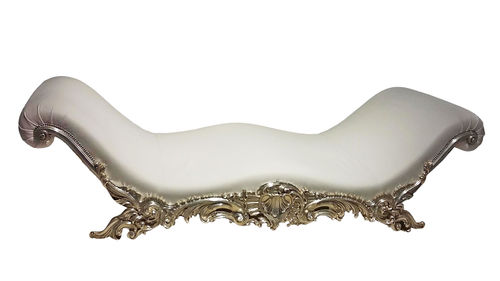
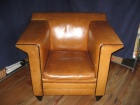
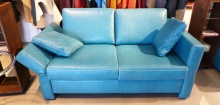
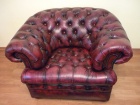
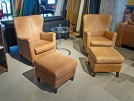
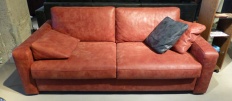
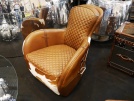
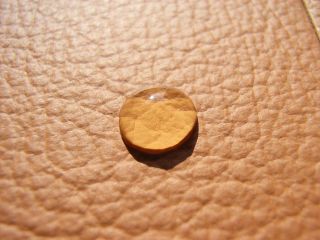
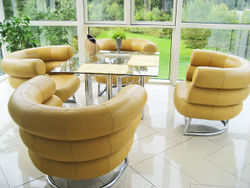
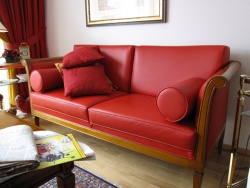
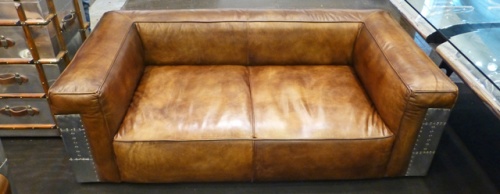
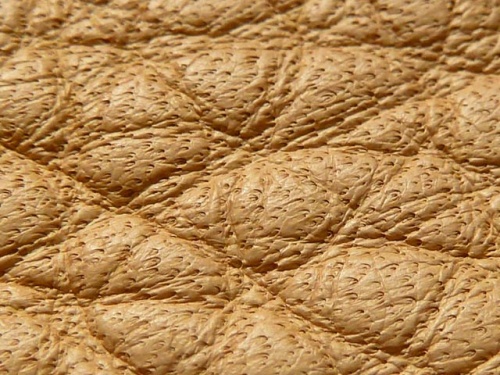
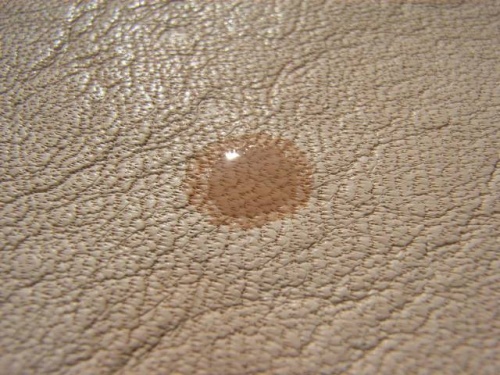
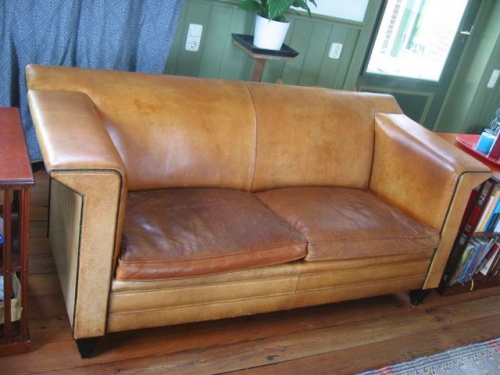
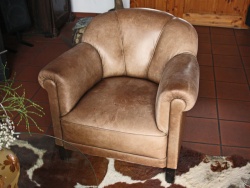
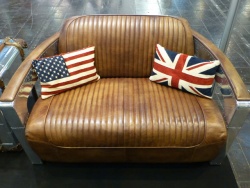
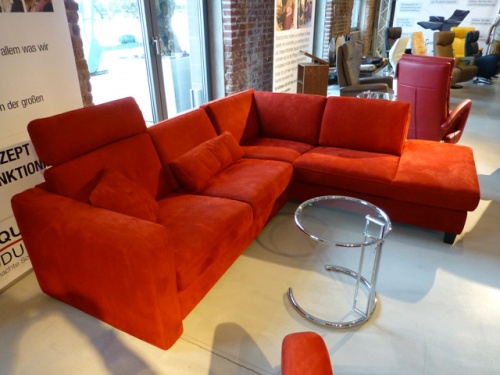
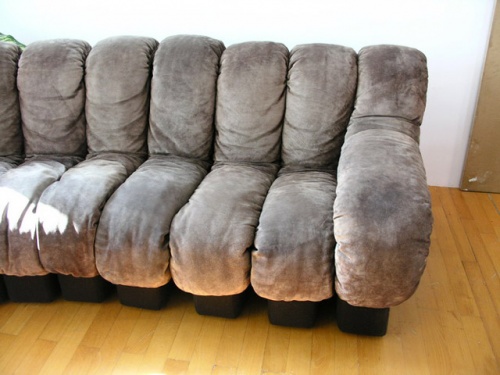
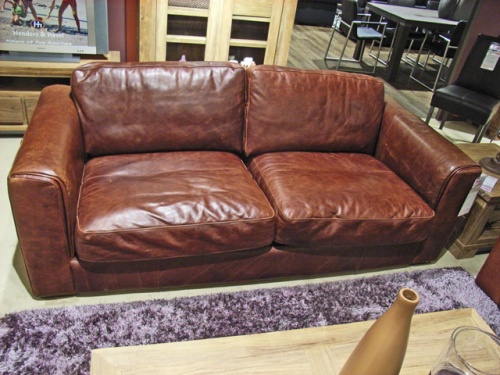
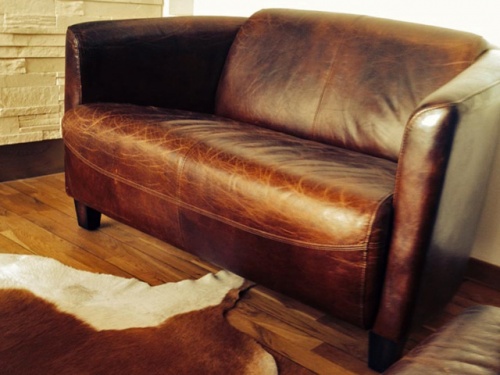
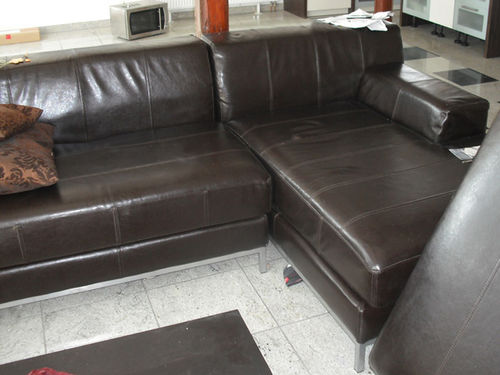
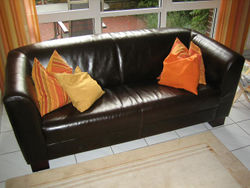
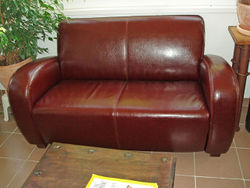
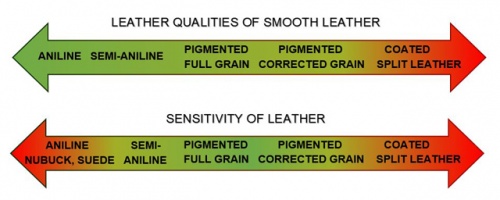
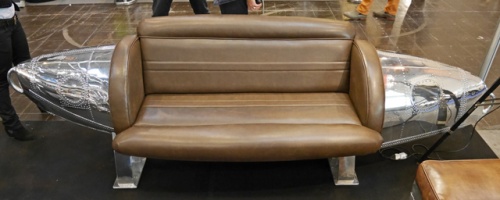
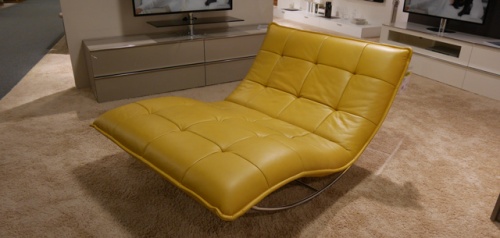


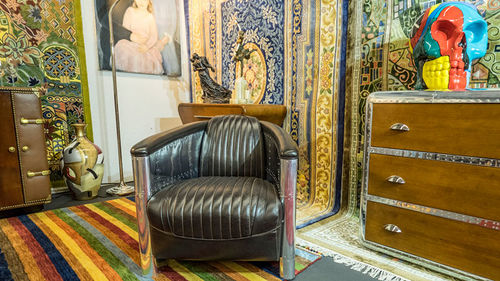
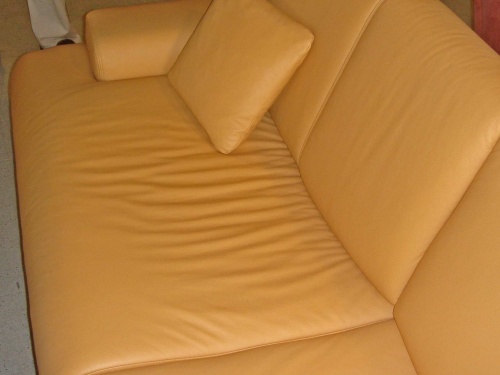
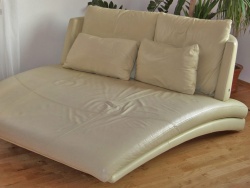
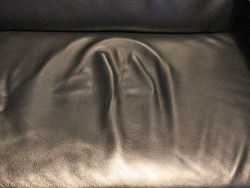
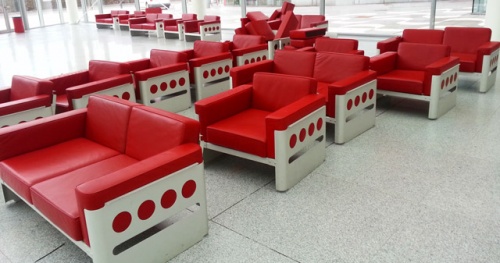
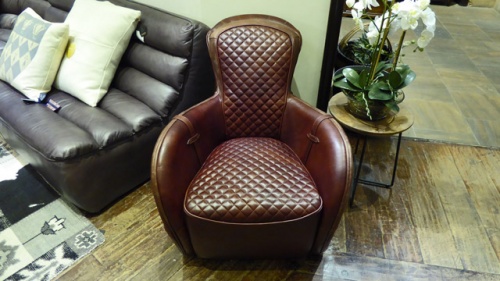
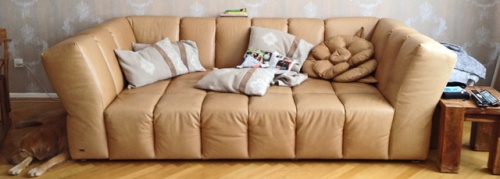
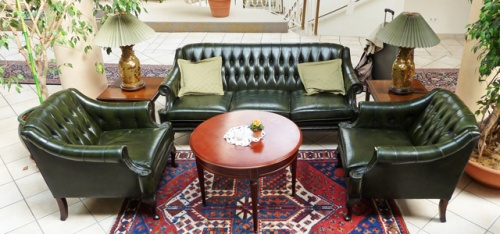
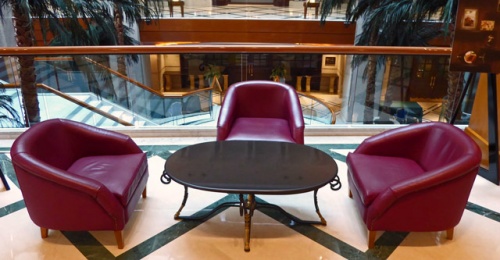

 a kotori web solution
a kotori web solution